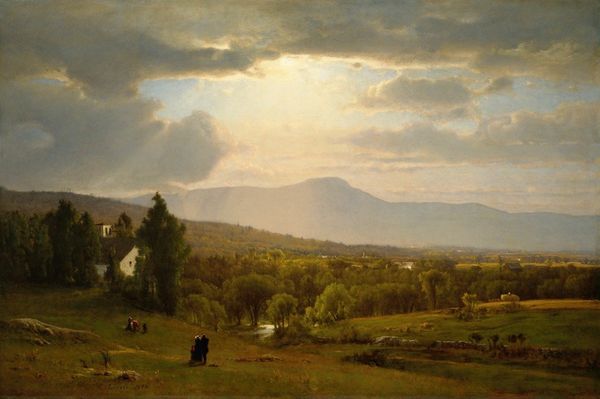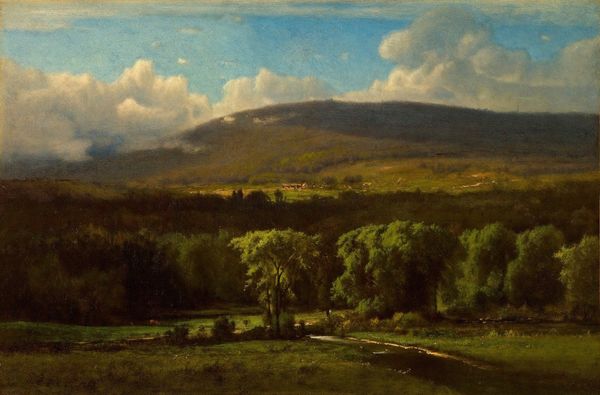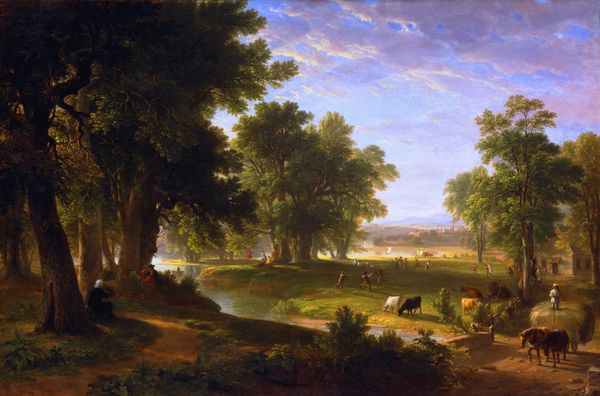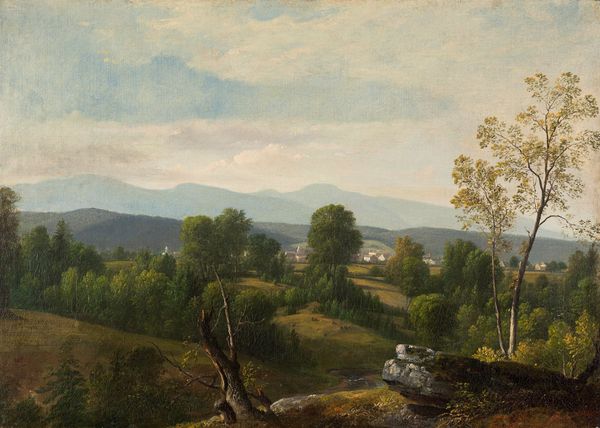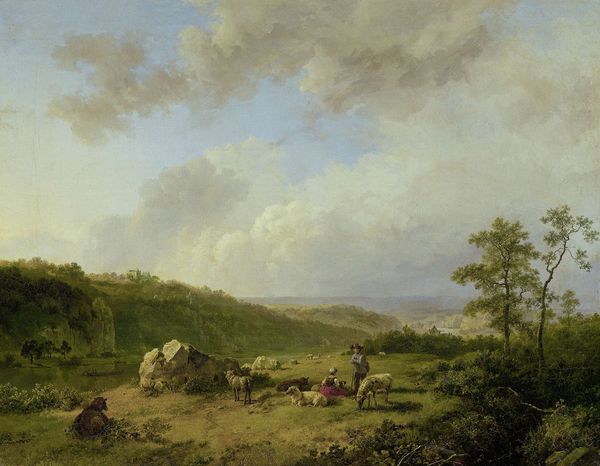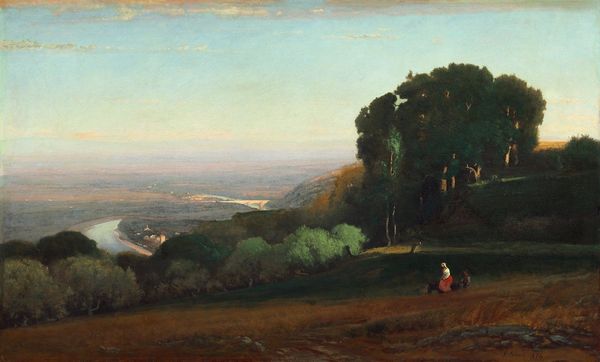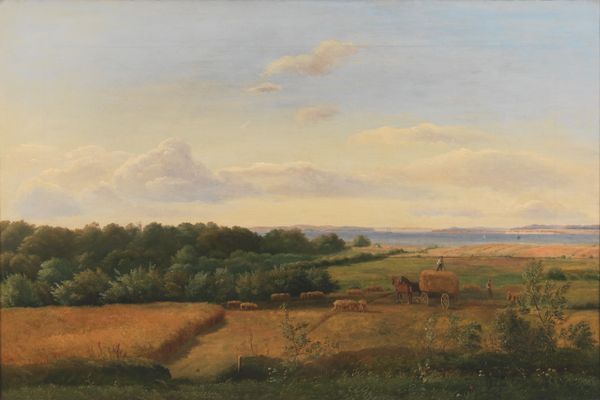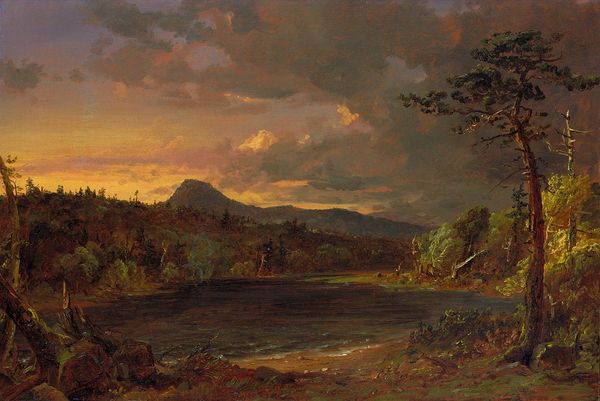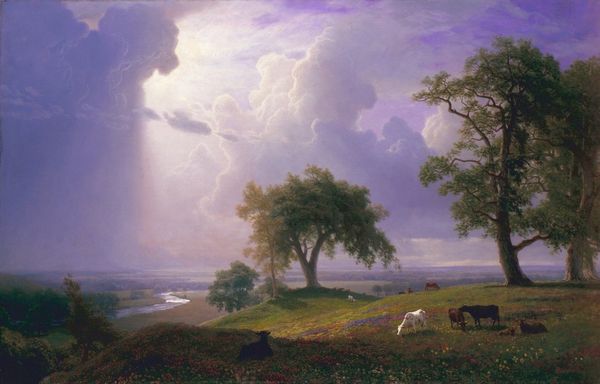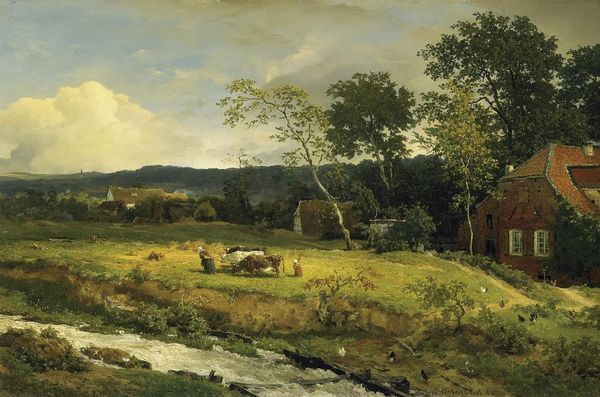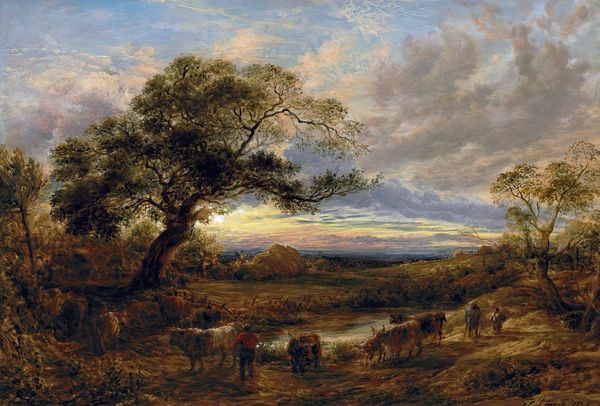
plein-air, oil-paint
#
plein-air
#
oil-paint
#
landscape
#
oil painting
#
hudson-river-school
#
history-painting
#
realism
Copyright: Public Domain: Artvee
Editor: Here we have George Inness's "Harvest Scene in the Delaware Valley" from 1867, rendered in oil paint. I am really drawn to the composition. The light seems to be hitting the center of the artwork and casting dramatic shadows everywhere else. What do you make of that? Curator: It is essential to examine how Inness uses light not merely representationally, but as a formal device. Notice how the contrast between the sunlit fields and the approaching storm divides the canvas, creating a tension between the idyllic and the ominous. Editor: I do see how the light impacts the scene's energy. It's as though nature is presenting us with an inevitable contrast: storm and clear sky. Is that part of what he intended? Curator: Consider, also, the placement of the trees. Their arrangement directs our gaze into the background, guiding our eye toward the distant mountains. Their contours create a sense of depth, further emphasized by atmospheric perspective. What effect does the subdued color palette contribute? Editor: It makes it feel a bit melancholy, perhaps. I'm noticing now how the muted greens and browns really enhance that feeling, even with the sunlight breaking through. I see, also, how the artist's use of brushstroke technique adds subtle visual texture and enhances my understanding of form. Thank you. Curator: Yes, precisely. It is in this interplay of form, color, and light that Inness constructs his statement about the American landscape. Thinking about its totality, this painting rewards patient looking and a recognition of formal choices.
Comments
No comments
Be the first to comment and join the conversation on the ultimate creative platform.
